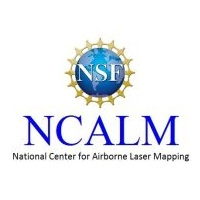2017 Student Seed Proposal Winners Selected
NCALM maps multiple project areas each year for graduate student PIs whose research would be enhanced by airborne lidar data and visible imagery. Students must write and submit a two page proposal to be considered for an award (details at: ncalm.cive.uh.edu/seed/about). The applications are reviewed by the NCALM Steering Committee, who then select winners based on intellectual merit and broader impact. Seed proposals that explore change detection by exploiting previously flown lidar coverage were encouraged this year.
NCALM would like to announce that the 2017 seed proposal winners have been awarded. There were 59 submissions, and eight projects were selected. Congratulations to the following students (and their advisors):
Madison Douglas (Michael Lamb)
California Institute of Technology
Using meandering channels in Death Valley to determine the role of bank cohesion for unvegetated rivers on Earth and Mars
Scott Feehan (Scott McCoy)
University of Nevada, Reno
Quantifying the geomorphic effectiveness of paleo-outburst floods in the Truckee River Canyon
Kyle Hemes (Dennis Baldocchi)
University of California, Berkeley
Ecosystem structure as a driver of climatic, habitat, and hydrological services in heterogeneous restored wetlands
Colleen Murphy (Noah Finnegan)
University of California, Santa Cruz
Alteration of groundwater flow due to slow landslide failure
Alexander Neely (Roman DiBiase)
Pennsylvania State University
Quantifying rock strength controls on landscape morphology in the Guadalupe Mountains, NM/TX
Robert Sare (George Hilley)
Stanford University
Point classification using multispectral lidar and SfM for earthquake and volcano hazards applications
William Struble (Josh Roering)
University of Oregon
Control of steepland landscape morphology by debris flows in the Idaho Batholith
Michael Vadman (Sean Bemis)
Virginia Polytechnic Institute and State University
Generating a decadal time-series of displacements near Parkfield, California, from 1929 to the present using change detection on lidar and historical aerial photographs


